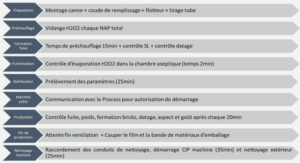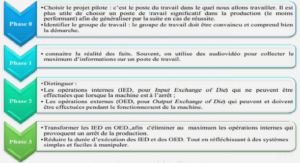GENDER VIOLENCE AND WOMEN`S EMANCIPATION IN ALICE WALKER`S THE COLOR PURPLE AND TONI MORRISON`S BELOVED
THE DIFFERENT TYPES OF VIOLENCE
The relationship between gender and violence is complex. The different roles and behaviors of females and males, children as well as adults, are shaped and reinforced by gender norms within society. These are social expectations that define appropriate behavior for women and men (e.g. in some societies, being male is associated with taking risks, being tough and aggressive and having multiple sexual partners). Differences in gender roles and behaviors often create inequalities, whereby one gender becomes empowered to the disadvantage of the other. Thus, in many societies, women are viewed as subordinate to men and have a lower social status, allowing men control over, and greater decision-making power than women. Gender inequalities also have a large and wide-ranging impact on society. For example, they can contribute to gender inequities in health and access to healthcare, opportunities for employment and promotion, levels of income, political participation and representation and education. The term violence plays an important role in the topic, that’s why it need to be defined clearly. There are many possible ways to define violence. The World Health Organization defines violence as: The intentional use of physical force or power, threatened or actual, against oneself, another person, or against a group or community that either results in or has a high likelihood of resulting in injury, death, psychological harm, mal-development or deprivation. The definition used by the World Health Organization associates intentionality with the committing of the act itself, irrespective of the outcome it produces. Excluded from the definition are unintentional incidents – such as most road traffic injuries and burns. The inclusion of the word ‘‘power’’, in addition to the phrase ‘‘use of physical force’’, broadens the nature of a violent act and expands the conventional understanding of violence to include those acts that result from a power relationship, including threats and intimidation. The ‘‘use of power’’ also serves to include neglect or acts of omission, in addition to the more obvious violent acts of commission. Thus, ‘‘the use of physical force or power’’ should be understood to include neglect and all types of physical, sexual and psychological abuse, as well as suicide and other self-abusive acts. This definition covers a broad range of outcomes including psychological harm, deprivation and mal-development. This reflects a growing recognition among researchers and practitioners of the need to include violence that does not necessarily result in injury or death, but that nonetheless poses a substantial burden on individuals, families, communities and health care systems worldwide. Many forms of violence against women, children and the elderly, for instance, can result in physical, psychological and social problems 13 that do not necessarily lead to injury, disability or death. These consequences can be immediate, as well as latent, and can last for years after the initial abuse. Defining outcomes solely in terms of injury or death thus limits the understanding of the full impact of violence on individuals, communities and society at large. One of the more complex aspects of the definition is the matter of intentionality. Two important points about this should be noted. First, even though violence is distinguished from unintended events that result in injuries, the presence of an intent to use force does not necessarily mean that there was an intent to cause damage. Indeed, there may be a considerable disparity between intended behavior and intended consequence. A perpetrator may intentionally commit an act that, by objective standards, is judged to be dangerous and highly likely to result in adverse health effects, but the perpetrator may not perceive it as such. As examples, a youth may be involved in a physical fight with another youth. The use of a fist against the head or the use of a weapon in the dispute certainly increases the risk of serious injury or death, though neither outcome may be intended. A parent may vigorously shake a crying infant with the intent to quieten it. Such an action, however, may instead cause brain damage. Force was clearly used, but without the intention of causing an injury. A second point related to intentionality lies in the distinction between the intent to injure and the intent to ‘‘use violence’’. Violence, according to Walters and Parke, is culturally determined. Some people mean to harm others but, based on their cultural backgrounds and beliefs, do not perceive their acts as violent. The definition used by the World Health Organization, however, defines violence as it relates to the health or well-being of individuals. Certain behaviors such as hitting a spouse may be regarded by some people as acceptable cultural practices but are considered violent acts with important health implications for the individual. Often inequalities in gender increase the risk of acts of violence by men against women. For instance, traditional beliefs that men have a right to control women make women and girls vulnerable to physical, psychological and sexual violence by men. They also hinder the ability of those affected to remove themselves from abusive situations or seek support. Violence against women is most often perpetrated by an intimate partner, but it takes many other forms: violence by a family member, sexual harassment and abuse by authority figures, trafficking for prostitution, child marriages, dowry-related violence, honor killings, sexual violence committed by soldiers during wars and so on. Health consequences of such violence range from physical injuries and unwanted pregnancies to sexually transmitted infections (including HIV), emotional problems such as anxiety and depression and in extreme cases homicide or suicide. 14 Violence against women is also the most pervasive yet under recognized human rights violation in the world. It is also a profound health problem that saps women’s energy, compromises their physical and mental health, and erodes their self-esteem. In addition to causing injury, violence increases women’s long-term risk of several other health problems, including chronic pain, physical disability, drug and alcohol abuse, and depression. Women with a history of physical or sexual abuse are also at increased risk for unintended pregnancy, sexually transmitted infections, and miscarriages. Despite the high costs of violence against women, social institutions in almost every society in the world legitimize, obscure, a deny abuse. The same acts that would be punished if directed at an employer, a neighbor, or an acquaintance often go unchallenged when men direct them at women, especially within the family. For over three decades, women’s advocacy groups around the world have been working to draw more attention to the physical, psychological, and sexual abuse of women and to stimulate action. They have provided abused women with shelter, lobbied for legal reforms, and challenged the widespread attitudes and beliefs that support violence against women. Increasingly, these efforts are having results. Today, international institutions are speaking out against gender violence. Surveys and studies are collecting more information about the prevalence and nature of abuse. More organizations, service providers, and policy makers are recognizing that violence against women has serious adverse consequences for women’s health and for society. Although both men and women can be victims as well as perpetrators of violence, the characteristics of violence most commonly committed against women differ in critical respects from violence commonly committed against men. Men are more likely to be killed or injured in wars or youth and gang-related violence than women, and they are more likely to be physically assaulted or killed on the street by a stranger. Men are also more likely to be the perpetrators of violence, regardless of the sex of the victim. In contrast, women are more likely to be physically assaulted or murdered by someone they know, often a family member or intimate partner. They are also at greater risk of being sexually assaulted or exploited, either in childhood, adolescence, or as adults. Women are vulnerable to different types of violence at different moments in their lives. There is still no universally agreed-upon terminology for referring to violence against women. Many of the most commonly used terms have different meanings in different regions and are derived from diverse theoretical perspectives and disciplines. In this chapter we deal with three types of violence such as sexual, physical and psychological in the novels Beloved and The Color Purple.
PHYSICAL VIOLENCE
Both population-based research and studies of emergency room visits in the United States indicate that physical abuse is an important cause of injury among women. Documented injuries sustained from such physical abuse include contusions, concussions, lacerations, fractures, and gunshot wounds. Population-based studies indicate that 40 to 75 percent of women who are physically abused by a partner report injuries due to violence at some point in their life. Nevertheless, injury is not the most common physical health outcome of genderbased abuse. More common are functional disorders ailments that frequently have no identifiable cause, such as irritable bowel syndrome; gastrointestinal disorders; and various chronic pain syndromes, including chronic pelvic pain. Studies consistently link such disorders with a history of physical or sexual abuse. Women who have been abused also tend to experience poorer physical functioning, more physical symptoms, and more days in bed than do women who have not been abused .For many women, the psychological consequences of abuse are even more serious than its physical effects. The experience of abuse often erodes women’s self-esteem and puts them at greater risk of a variety of mental health problems, including depression, anxiety, phobias ,post-traumatic stress disorder, and alcohol and drug abuse. Violence against black women is an apparent concern for Toni Morrison. The roots of the violence experienced in the South are traceable to the unjustified treatment of black African Americans by their slave owners. In this sense, it would appear that black females bore the brunt of the suffering as they doubly had to endure not only torture as the men but also rape by the white slave masters. Additionally, black children struggle with abuse in their domestic households as well as from their community. Consequently, characters in Morrison’s Beloved are forced to find ways to survive the violence that surrounds them to come out of their marginalized spheres. Sweet Home to Sethe is like a ‘hell hole’. Cincinnati on the other hand signifies freedom from the brutality in Sweet Home and Sethe is determined to get out of this hell hole even with the danger that stands on her way. After she is raped by Schoolteacher’s nephew, Sethe reports the incident to Mrs. Garner whom she said “shades a tear”, Schoolteacher brutally beats her up for violating his authority. She also tells the story of her mother who was lynched after she was tortured. Morrison here is telling the story of the slave women who did not only have to suffer child bearing and nurturing but also undergo serious violence. 23 In Beloved, the theme of violence can best be understood through Sethe. The idea of violence and the brutal assaults that arise from slavery lead to a death of an absolute magnitudethe end of a person’s humanity. After Mr. Garner’s death, Mrs. Garner asks schoolteacher her brother to take over the management of Sweet Home plantation. The schoolteacher’s oppressive nature makes living on the estate more unbearable, which causes the slaves to devise an escape plan. In one scene, the violence experienced by slaves in these plantations becomes evident. After anticipating the slave’s escape, the schoolteacher together with his nephews capture and kill Sixo, while brutally punishing Paul D before returning him to Sweet Home. To worsen the situation, the schoolteacher, and his cronies violates Sethe in the barn, and steals her baby’s milk. The schoolteacher punishes Sethe later on through whipping, despite being aware of her pregnancy. In the novel, Schoolteacher represents the prime agent of the structure of white supremacists and the era of slavery. In many instances, Sethe mentions the violent act of taking her baby’s milk. She states: “Nobody will ever get my milk no more except my own children. I never had to give it to nobody else—and the one time I did it was took from me— they held me down and took it”. 7 . The event primarily takes Sethe’s humanity away from her and transforms her into an animal as she later kills her daughter to prove her word that nobody will take her children or her children’s milk from her ever. The perversity of the institution of slavery is so dangerous that it manages to sever the bonds between parents and offspring. Morrison here shows that the consequence of slavery not only exerts physical pain on Sethe who represents the women at the time, but it also infringes her feelings towards her children. When Sethe commits the most violent act of killing her child, it signifies a major twist in the character’s disposition so much so that Sethe completely loses ties with her individuality or self and become devoid of her vitality. Based on the mistreatment she undergoes and tolerates at the hands of her slave owners, Sethe becomes undone, physically and spiritually to the point of exhaustion, and at some point, madness. “…what he (schoolteacher) did broke three more Sweet Home men and punched the glittering iron out of Sethe’s eyes, leaving two open wells that did not reflect firelight’’8 . The act of killing Beloved is not understandable in the beginning, however, the conditions in which Sethe had to survive in and the brutality she experienced drove her to commit infanticide. Her fear of the violence becomes so bad that she 7Toni Morrison. Beloved. United States. Alfred Knopf, would rather kill her child than subject her to live in the same terrible conditions. From an analytic perspective, not madness or exhaustion caused Sethe to kill her infant, but the actuality of slavery. Besides dealing with the pain of killing her child, Sethe also struggles with inner turmoil from her past when she recalls her mother’s hanging. Such violent events in history signify how routinely violence and death is passed on from generation to generation. Inspired by the black feminist movement that began in the 1960s, Toni Morrison’s novel Beloved reflects the general illustrations of women of color. Morrison intends to expose the reader to the effects of institutionalized slavery on African Americans. Her point of view delves deeply into the issues that African American women encounter in this period. Her representations of motherhood, domesticity, and violence in Beloved, paint a perfect picture of repression and disillusionment. While Morrison understands and acknowledges motherhood as an extraordinary experience for women, she does not limit the women’s role simply to motherhood. Her writings in this regard have transformed how readers analyze and understand stereotypical representations of black women. By narrating Sethe’s story, Morrison focuses on the dehumanizing consequences of slavery, particularly on black motherhood. The effect of the violence and brutality is psychological exhaustion that drives the main character to the brink of a mental disorder. Consequently, slavery threatens the mental and spiritual world of the characters, causing a series of dreadful and terrible consequences. In the novel, the recovery of the stolen milk signifies the sustenance of a child’s needs. When Sethe’s milk is stolen, she tends to feel like she cannot provide for her child which brings her even lower than the fact that she was raped in the first place. Beloved seems to be hell bent on exposing the problems that the black women went through in the 18th and 19th centuries. Violence has not been used to demonize men. On the contrary, the violence is seen to manifest itself in both males and females alike. For example, Sethe is a mother who loves her child dearly, and she would go to any length to make sure she is okay. However, when schoolteacher becomes the master, the slaves attempt to escape whereby some of them die in the process. Sethe is stopped after she slices the throat of her daughter Beloved who bleeds out and dies. As much as she loved her child, she would rather have her dead than watch her become a slave. This act of violence is triggered by the brutality that was presented by slavery. Sethe remembered the cruel things did to her and knew that she would not let a child of hers go through the same treatment that was handed to her. She says that ‘I got a tree on my back and 25 a haunt in my house, and nothing in between but this daughter I am holding in my arms’9 . Additionally, the violent crime committed is followed up by the presence of the dead child as a ghost. Although this is a scary bit for the readers, the novel manages to capture the highlights such as when the ghost puts its prints on the cake that does not make the ghost seem too violent for digestion. The theme of motherhood also blossoms as the reader is made to share in the grief and the regret of a mother who has slain her own. The memory of Sethe’s beating is forever embedded in her mind because she has the imprint of a tree on her back. It is impossible to forget this atrocious beating as she carries this reminder with her every day. Sethe refers back to the incident of the milk because it was so devastating. Sethe was literally raped which is something that may never be forgotten. This is a brutal physical example of what African Americans experienced during times of slavery. Paul D. cannot believe Sethe was beaten like that while she was pregnant. With this passage, Morrison is pointing out the cruelties that African Americans suffered during enslavement. Paul D. may be wondering what type of person beats a pregnant woman. Although Sethe is free in Ohio, the atrocities of slavery still linger in her mind as well as on her body. Sethe’s physical body is no longer in Kentucky on the slave plantation, but the scars from the physical abuse are still on her back to remind her daily of her enslavement. To further describe Sethe’s beating, literary critic Babacar M’Baye wrote an article discussing racial oppression of the slaves at Sweet Home. He says, “Sethe was a victim of white sexual abuse…The mark of the ‘tree’ on Sethe’s back symbolizes the brutal impact of the sexual violence that whites use to dehumanize, depersonalize, and control black people”10. White slave masters used physical and sexual violence to control blacks, and they made them feel degraded and worthless. Also, the scars on Sethe’s back will always remind her of the enslavement to the white man because she suffered the scars at the hand of the white slave master.
Dedication |






